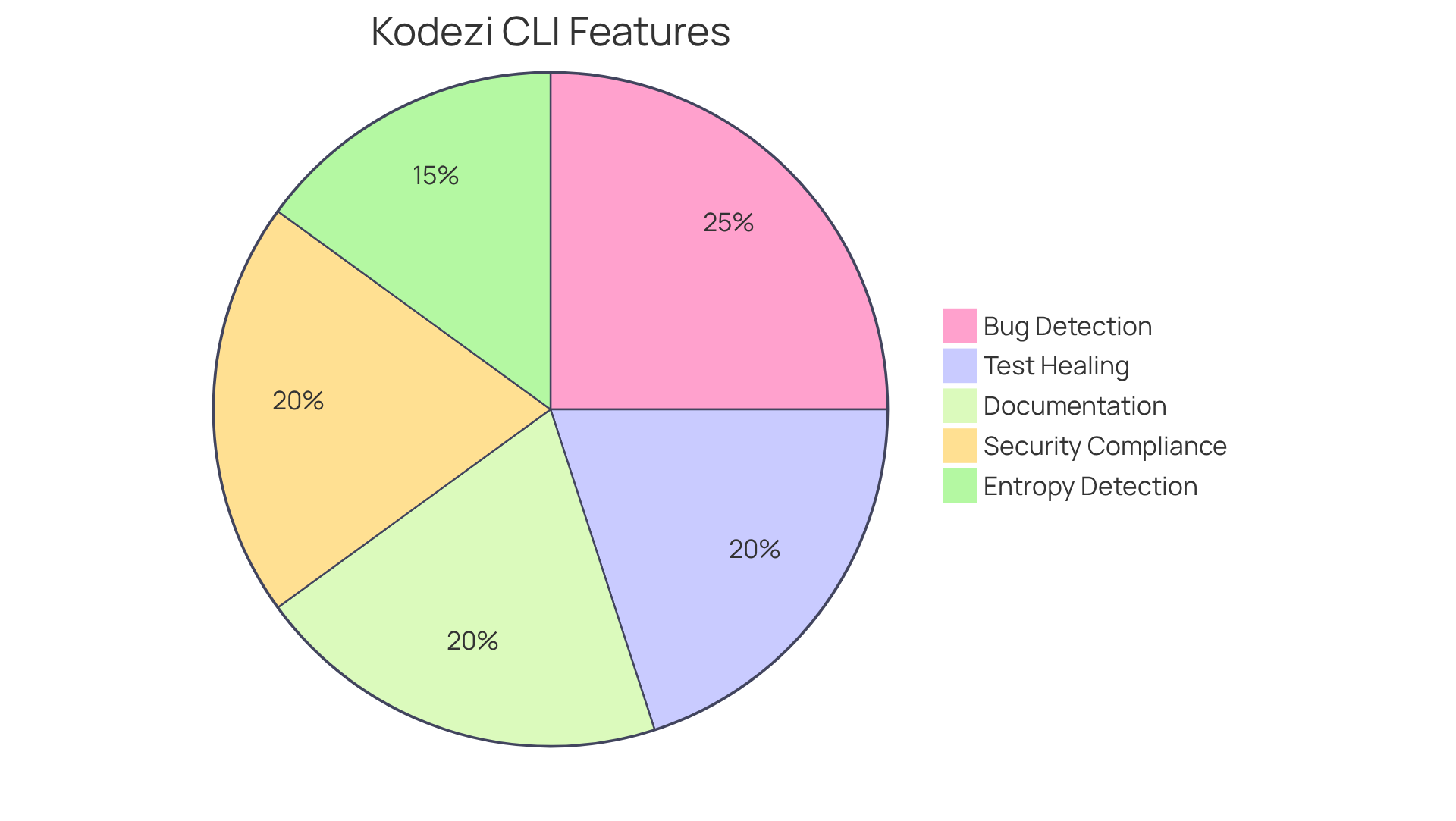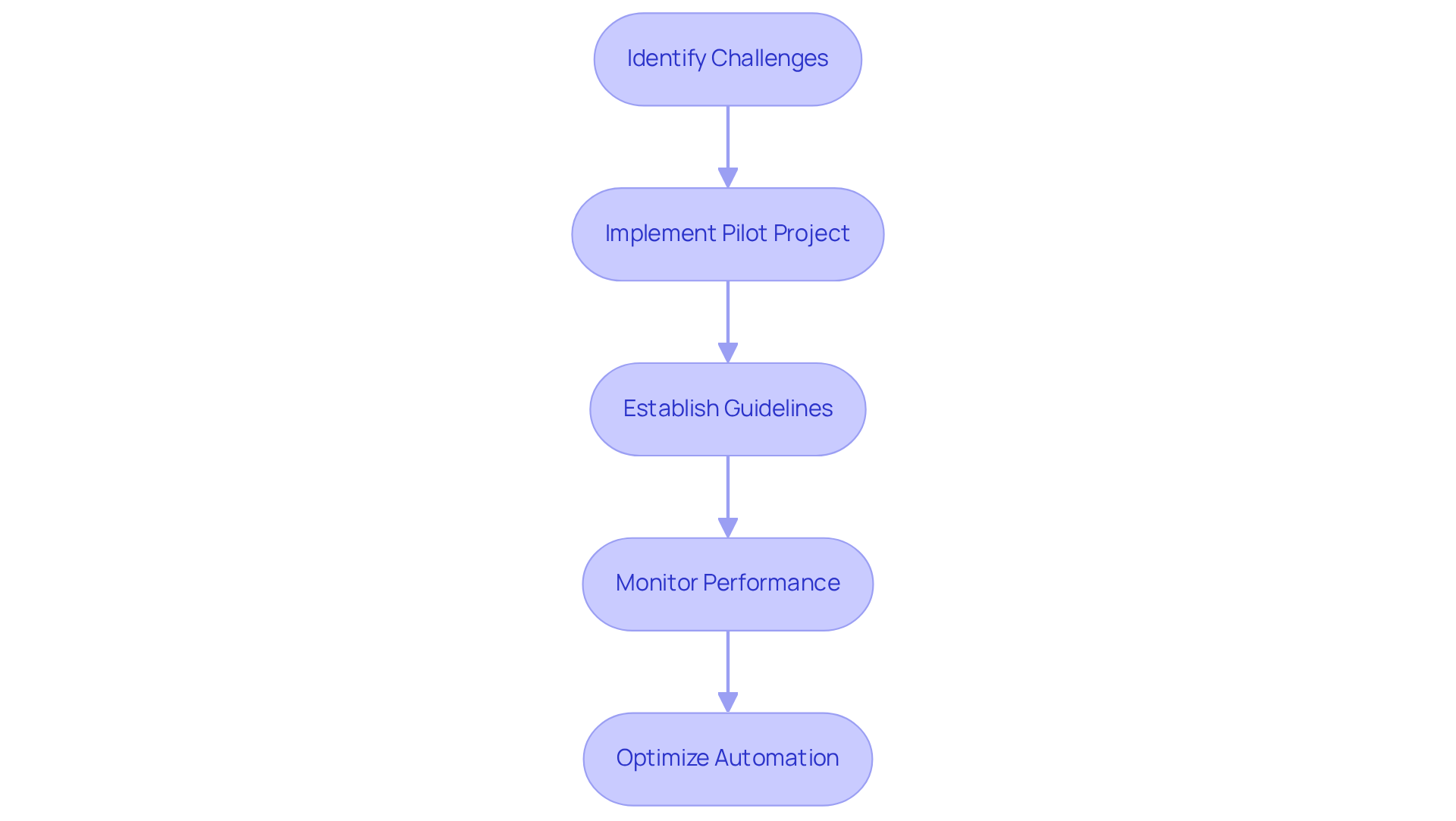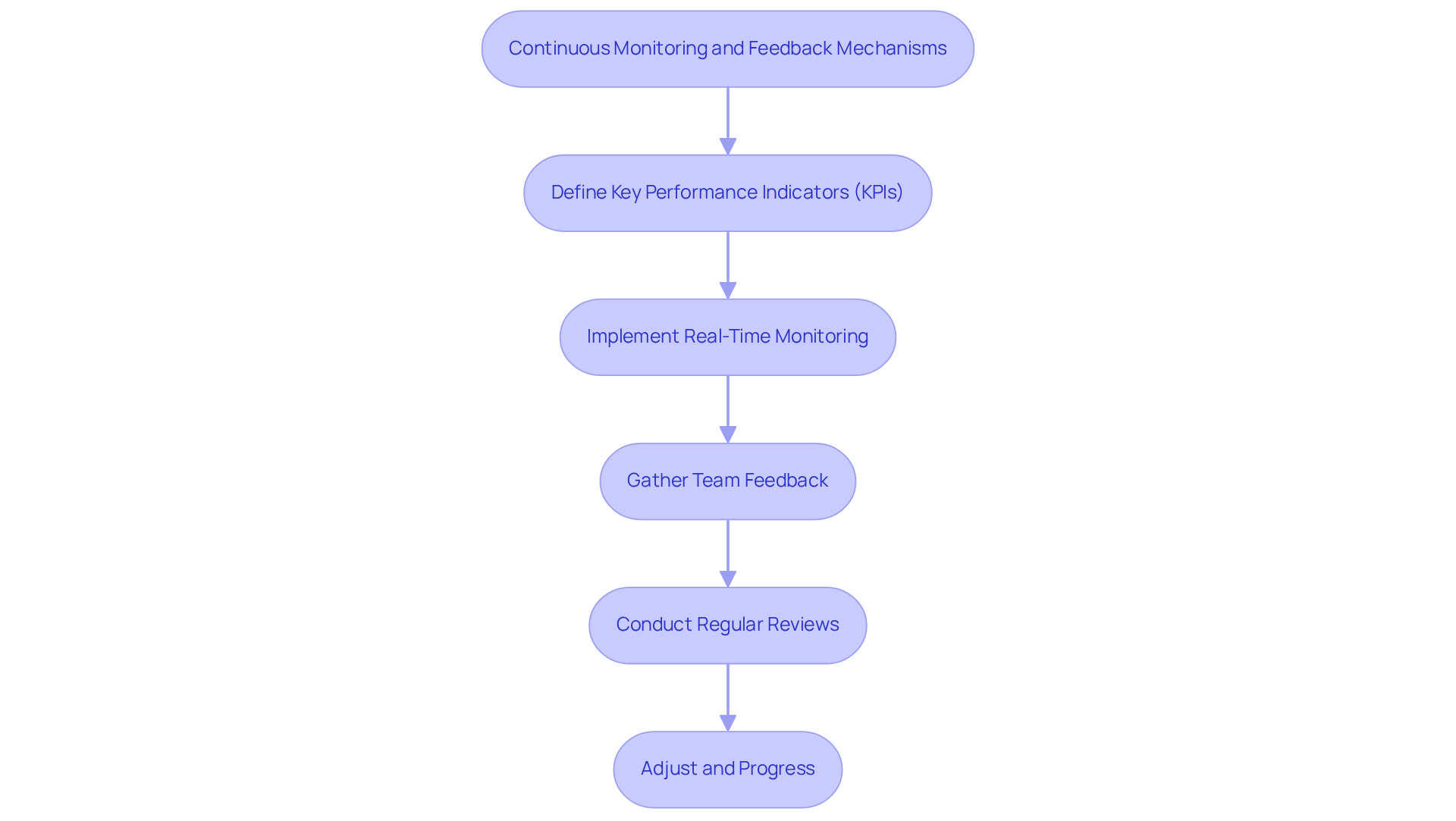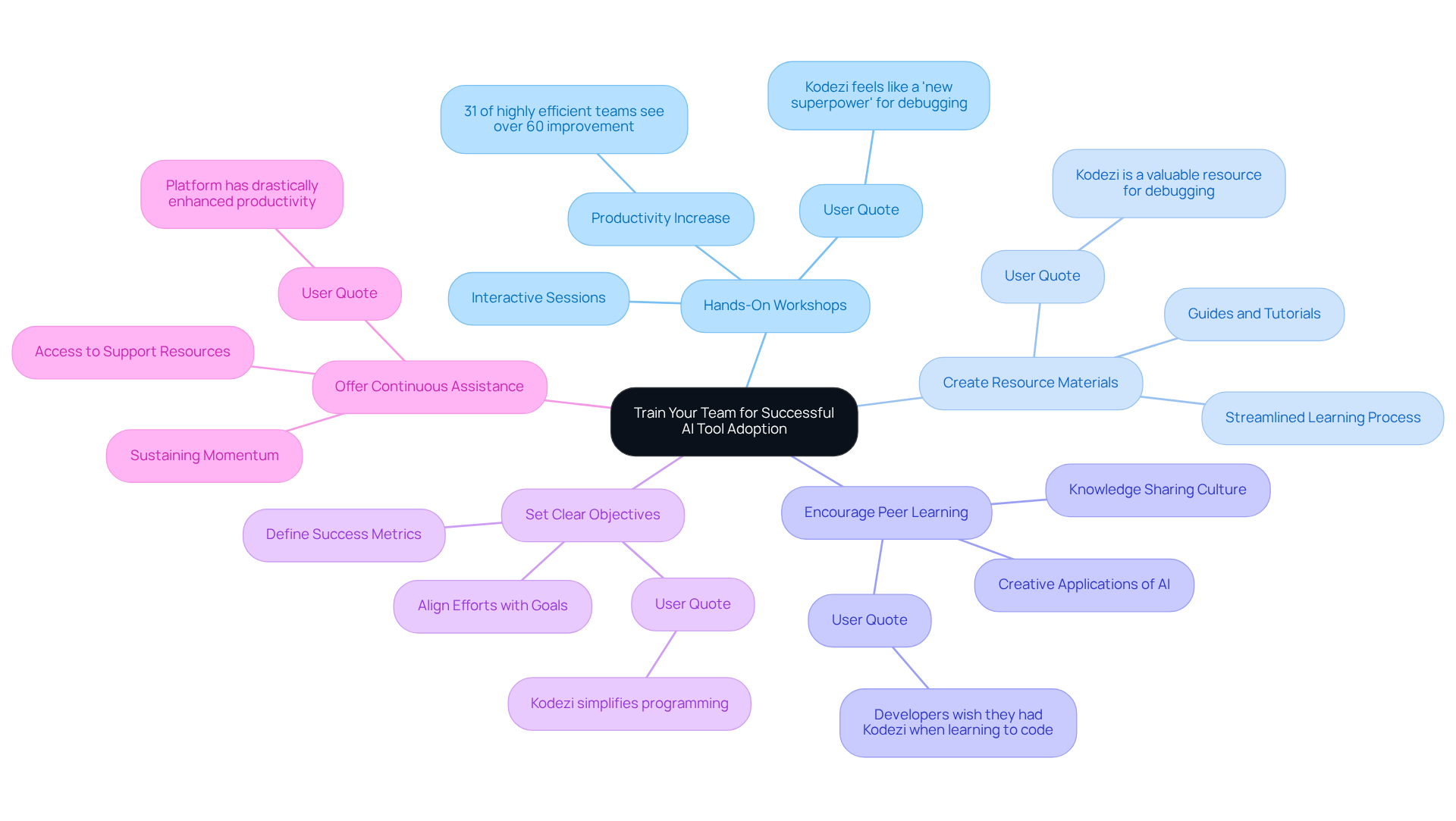Overview
Developers often face significant challenges in maintaining code quality and efficiency. These coding hurdles can lead to increased technical debt and hinder productivity. Enter Kodezi's CLI, a powerful tool designed to tackle these issues head-on. With features like automated bug detection, test healing, and documentation synchronization, Kodezi streamlines the coding process and alleviates common pain points.
By automating tedious tasks, Kodezi allows engineering teams to focus more on innovation rather than maintenance. Imagine the time saved when bugs are detected automatically, or when tests heal themselves. These features not only enhance code quality but also foster a more productive development environment.
Furthermore, the synchronization of documentation ensures that your code remains up-to-date and accessible, reducing confusion and enhancing collaboration among team members. The result? A significant boost in overall productivity and a reduction in the technical debt that often plagues development projects.
Are you ready to elevate your coding practices? Explore the tools available on Kodezi's platform and discover how they can transform your development workflow. Embrace the future of coding with confidence and efficiency.
Introduction
In the fast-paced realm of software development, the challenge of managing complex codebases is more significant than ever. Developers often grapple with the intricacies of their work, leading to inefficiencies and frustration.
Furthermore, AI code maintenance tools are emerging as a solution, promising to transform how developers approach coding by automating tedious tasks and enhancing productivity.
However, as organizations seek to integrate these advanced solutions, a critical question arises: how can teams effectively adopt and leverage these tools to maximize their benefits while navigating potential pitfalls?
Understand AI Code Maintenance Tools and Their Benefits
In the ever-evolving landscape of software development, managing codebases effectively is a significant challenge for developers. AI code maintenance tools, such as Kodezi's CLI, are designed to automate and simplify this process, particularly for B2B engineering teams. These tools provide a range of advantages that can transform your coding practices.
-
Automated Bug Detection and Fixing: Imagine a tool that can instantly identify and resolve issues within your codebase. The CLI tool does just that, autonomously applying solutions and drastically reducing the time developers spend on debugging.
-
Test Healing: What if your testing suite could remain robust and reliable without constant manual intervention? Kodezi's software rewrites failing tests, ensuring high code quality is maintained effortlessly.
-
Documentation Synchronization: Keeping documentation aligned with the current state of the codebase can be daunting. Fortunately, the CLI automatically updates documentation, making it essential for onboarding new team members and ensuring clarity across the board.
-
Entropy Detection: Are you aware of the complexities lurking in your code? This tool analyzes code complexity and highlights risk areas, enabling proactive management of technical debt and enhancing overall code quality.
-
Security Compliance: Lastly, how secure is your codebase? The CLI tool identifies vulnerabilities and enforces coding standards, ensuring adherence to the latest security best practices.
Overall, integrating the AI code maintenance tool known as Kodezi CLI into your development processes can significantly enhance productivity, reduce technical debt, and maintain high code quality over time. Explore the tools available on the Kodezi platform to revolutionize your coding experience.

Integrate AI Tools into Your Development Workflow Effectively
To effectively tackle the coding challenges developers encounter, it's crucial to consider how the AI code maintenance tool can improve your development workflow. Are you facing issues with debugging, documentation updates, or testing processes? By identifying these specific challenges, you can ensure that the AI solutions you choose will deliver significant improvements.
One standout resource is Kodezi CLI, which addresses these challenges head-on. This multifunctional tool not only automates code repairs but also boosts programming efficiency. It integrates seamlessly with platforms like GitHub and CI/CD pipelines, enhancing your development environment without disrupting established practices.
To truly gauge the effectiveness of Kodezi, consider implementing a small pilot project. This allows your team to collect valuable feedback and assess how the AI resource impacts productivity and workflow efficiency before committing to a full-scale rollout.
Establishing clear guidelines is essential. Create comprehensive documentation that outlines how and when to utilize the AI resources. This clarity ensures that all team members understand their roles and responsibilities, fostering a unified approach to AI integration.
Ongoing performance monitoring is key. By continuously tracking how AI resources perform within your workflow, you can make data-driven adjustments that optimize automation usage, ultimately enhancing productivity and maintaining code quality.
By following these steps, engineering teams can facilitate a smooth transition to AI-enhanced development processes by utilizing an AI code maintenance tool, maximizing the benefits of automation and improving overall efficiency. Notably, organizations that have embraced AI solutions report an average productivity increase of 66%, with programming tasks experiencing an impressive 126% productivity enhancement thanks to AI assistance. Furthermore, 92% of senior executives plan to make significant AI investments by 2028, highlighting the critical role of AI integration in development workflows. However, teams must remain aware of the learning curve associated with utilizing AI resources, which may require effort and training to fully harness their advantages.

Establish Continuous Monitoring and Feedback Mechanisms
To tackle the ongoing challenges developers face in coding, it is crucial to ensure the effectiveness of the AI code maintenance tool through continuous monitoring and feedback mechanisms.
-
Define Key Performance Indicators (KPIs): Identifying essential metrics to assess AI software performance—such as bug resolution duration, test pass rates, and documentation accuracy—is fundamental. Organizations that implement precise KPIs can experience a 15.2% revenue uplift, demonstrating the importance of effective measurement.
-
Implement Real-Time Monitoring: Utilizing advanced monitoring systems to track AI system performance in real-time allows for immediate adjustments when issues arise. This capability significantly reduces mean time to detect (MTTD) and mean time to respond (MTTR) to problems, ultimately preventing costly downtime.
-
Gather Team Feedback: Regularly requesting input from team members about their experiences with AI resources can reveal areas for improvement and potential challenges. This feedback fosters a culture of continuous enhancement, encouraging teams to reflect on their coding practices.
-
Conduct Regular Reviews: Scheduling periodic evaluations of AI system performance against established KPIs helps organizations make data-guided choices about resource usage. Companies utilizing AI-driven KPIs are threefold more likely to be agile and responsive, resulting in enhanced operational efficiency.
-
Adjust and Progress: Being ready to change the application of AI resources based on observation outcomes and group feedback ensures that tools like Kodezi remain in sync with evolving project requirements. This adaptability guarantees continued value over time.
By employing these strategies, teams can sustain the efficiency of their AI resources using an AI code maintenance tool, ensuring alignment with development objectives and contributing to overall project success.

Train Your Team for Successful AI Tool Adoption
To ensure the successful adoption of AI tools, organizations should implement a comprehensive training program that emphasizes hands-on experience. Developers often face significant coding challenges, which can hinder productivity and efficiency. Kodezi addresses these issues effectively, making it a valuable resource for teams.
-
Hands-On Workshops: Facilitate interactive sessions where group members can engage with AI resources in practical situations. This hands-on approach fosters confidence and competence, significantly enhancing tool usage. Research shows that groups involved in such workshops observe a substantial rise in productivity, with 31% of highly efficient software teams experiencing over 60% improvements through AI adoption. Users like Ansgar, a Software Engineer, have expressed that Kodezi feels like a "new superpower" for debugging, showcasing the potential productivity boosts from effective training.
-
Create Resource Materials: Develop comprehensive guides, tutorials, and FAQs that serve as reference points for team members as they learn to navigate AI tools effectively. This resourcefulness can streamline the learning process and reduce the time spent troubleshooting. As Pradeep from the Indian Institute of Technology Delhi noted, Kodezi is a valuable resource for debugging, with regular updates that enhance user experience.
-
Encourage Peer Learning: Foster a culture of knowledge sharing by motivating members to exchange tips and experiences related to AI tools. This collaborative setting can result in creative applications of AI and improve overall group performance. Lárus, a Backend System Engineer, highlighted that this tool is something developers wish they had when learning to code, emphasizing the importance of shared learning experiences.
-
Set Clear Objectives: Clearly define what successful adoption looks like and convey these goals to the group. Aligning their efforts with organizational objectives ensures that everyone is working towards a common purpose, increasing motivation and focus. Users like Carlo, COO at tl;dv, have noted that Kodezi simplifies programming, making it easier to achieve these objectives.
-
Offer Continuous Assistance: Ensure that group members have access to support resources, such as dedicated AI advocates or help desks, to aid with any challenges they face. Ongoing assistance is essential for sustaining momentum and tackling any obstacles to efficient resource utilization. As Augustin, Founder at Raebus, mentioned, the platform has drastically enhanced their engineering team’s productivity, enabling them to concentrate on more advanced tasks.
Investing in training through hands-on workshops not only enhances the likelihood of successful adoption of the AI code maintenance tool but also leads to improved development efficiency, positioning organizations to thrive in an increasingly competitive landscape. To experience the benefits of Kodezi firsthand, consider signing up for a free trial or demo today!

Conclusion
Integrating AI code maintenance tools into software development processes is not just a trend; it signifies a crucial shift towards enhanced efficiency and effectiveness in programming. Developers often grapple with tedious tasks and debugging challenges—how can these be alleviated? By leveraging tools like Kodezi's CLI, teams can automate mundane tasks, elevate code quality, and significantly cut down debugging time, thereby transforming the overall coding experience.
What are the key benefits of adopting AI tools? The article highlights:
- Automated bug detection
- Test healing
- Documentation synchronization
- Security compliance
These features collectively streamline the development workflow, allowing teams to focus on innovation rather than routine maintenance tasks. Furthermore, the importance of ongoing performance monitoring, feedback mechanisms, and comprehensive training cannot be overstated, as these elements ensure that AI tools are effectively integrated and utilized to their full potential.
As organizations navigate the complexities of modern software development, embracing AI code maintenance tools is essential for staying competitive. By investing in proper training and establishing clear guidelines for AI integration, teams can unlock significant productivity gains and foster a culture of continuous improvement. The future of development lies in the hands of those willing to adapt and innovate—are you ready to take the first step? Explore AI solutions that can elevate your coding practices and enhance overall efficiency.
Frequently Asked Questions
What are AI code maintenance tools?
AI code maintenance tools are designed to automate and simplify the management of codebases, particularly for B2B engineering teams, helping to enhance productivity and maintain code quality.
What is Kodezi's CLI tool?
Kodezi's CLI is an AI code maintenance tool that automates processes such as bug detection, test healing, documentation synchronization, entropy detection, and security compliance.
How does Kodezi's CLI tool help with bug detection?
The CLI tool can instantly identify and resolve issues within the codebase autonomously, drastically reducing the time developers spend on debugging.
What is test healing in the context of Kodezi's CLI?
Test healing refers to the tool's ability to rewrite failing tests, ensuring that the testing suite remains robust and reliable without constant manual intervention.
How does Kodezi's CLI assist with documentation?
The CLI automatically updates documentation to align with the current state of the codebase, which is essential for onboarding new team members and ensuring clarity.
What is entropy detection, and why is it important?
Entropy detection analyzes code complexity and highlights risk areas, enabling proactive management of technical debt and enhancing overall code quality.
How does Kodezi's CLI tool ensure security compliance?
The CLI tool identifies vulnerabilities and enforces coding standards, ensuring adherence to the latest security best practices.
What are the overall benefits of integrating Kodezi's CLI into development processes?
Integrating Kodezi's CLI can significantly enhance productivity, reduce technical debt, and maintain high code quality over time.




